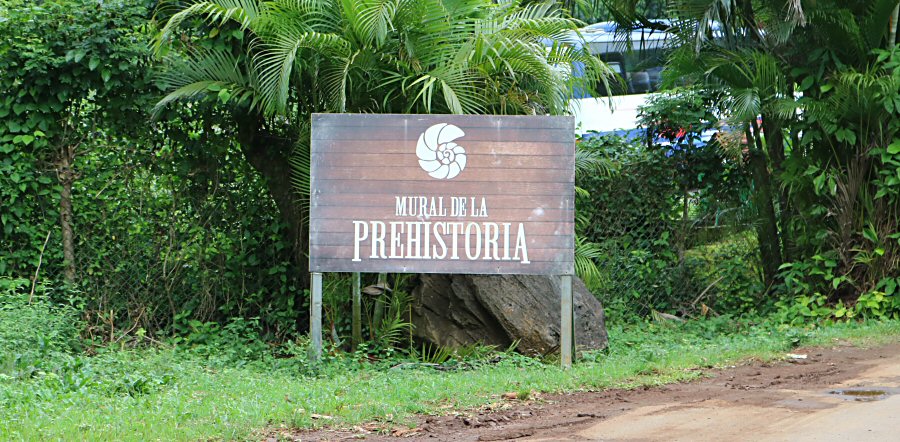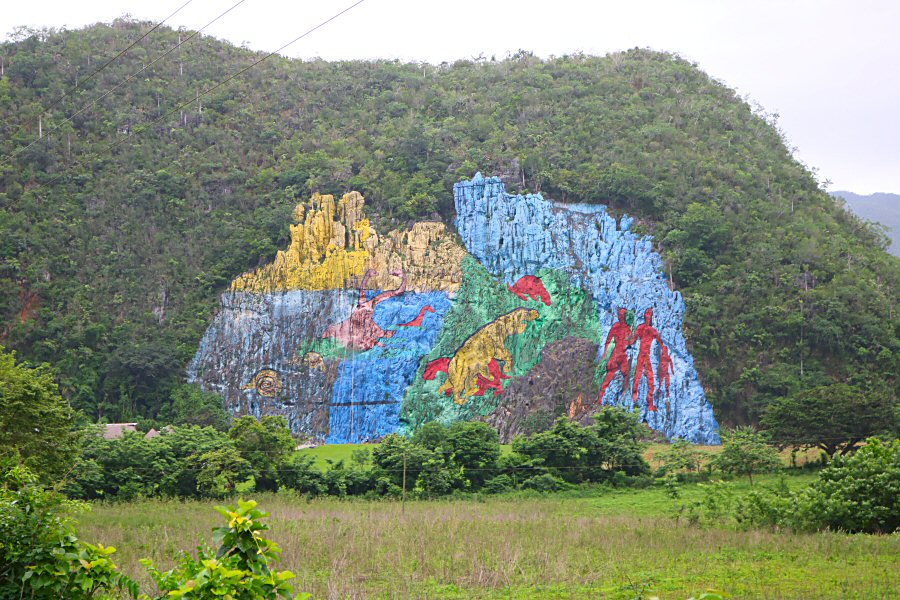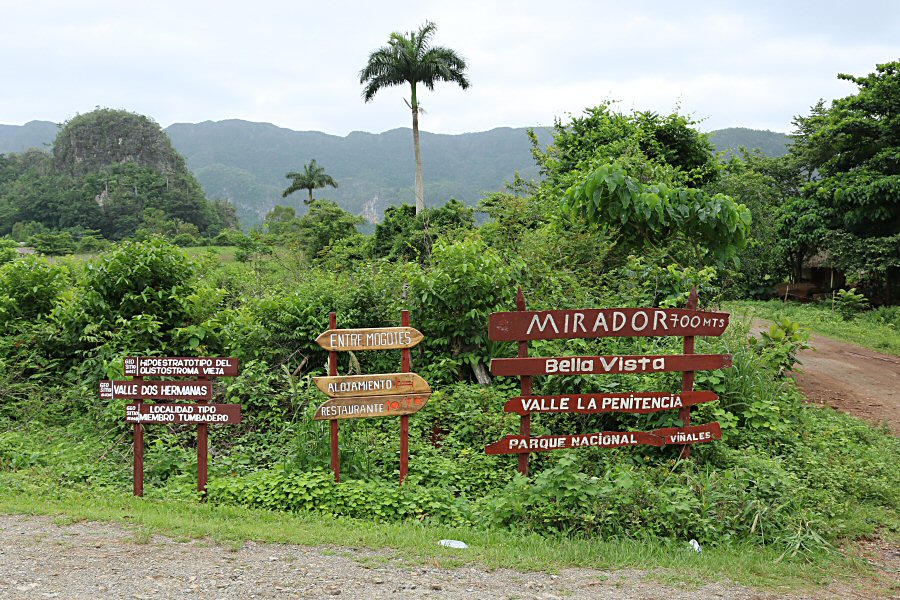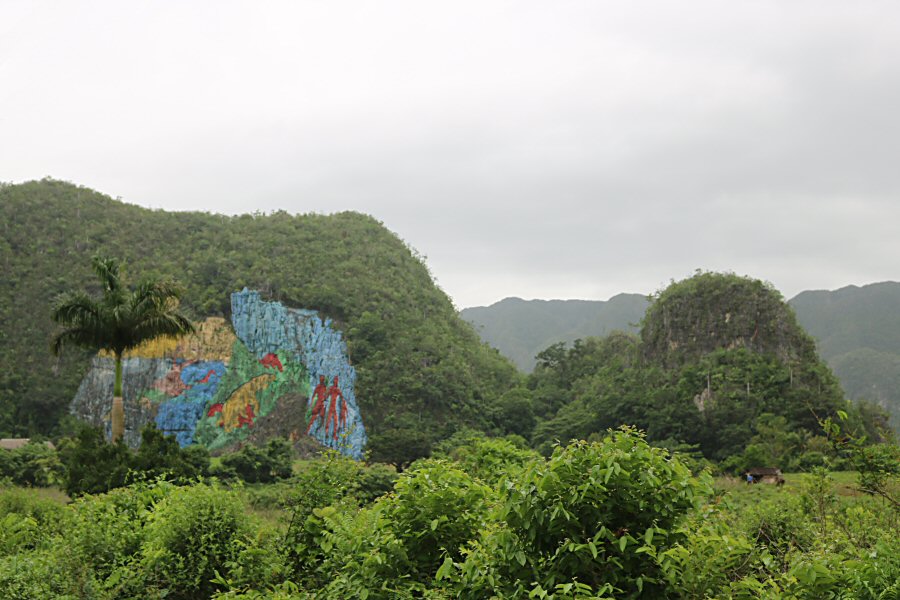
Within the valley, called Valle de Dos Hermanos, there are two hills south of the Los Órganos mountains that belong to the Cordillera de Guaniguanico Mountain range. The Palmarito River has carved the mountain here, creating two separate hills, called Mogotes de las Dos Hermanos (Mogote of the Two Sisters). There may be two explanations for why these hills were given this name. It is possible that this name was given in reference to two sisters who lived here before, but it is more logical that this name was given because the hills resemble each other very much due to the two extensions or eminences towards the south.
A mogote is a generally isolated, steep-sided residual hill in the tropics composed of either limestone, marble, or dolomite. The hills typically have a rounded, dome-like shape, covered by dense vegetation. Mogotes are common in the Caribbean, especially in Cuba and Puerto Rico.
The Prehistoric Mural, which can be misleading because of its name, is unlike the murals seen in caves and made in ancient times, was made in the middle of the 20th century and depicts the evolution of life in this region. It is painted along the entire slope of one of these hills of the Dos Hermanos, called Pita. The mural, which is 120 meters high and 160 meters wide, is considered one of the largest open-air murals in Cuba. Since, according to Guinness World Records, the world's largest mural resides on multiple grain silos in Incheon, west of Seoul, South Korea and the painted surface is about 23,690 square meters, the importance of Mural de la Prehistoria's size of about 19,200 square meters can be understood.
It was designed by the painter and scientist Leovigildo González Morillo who is seen as the successor of the Mexican muralist Diego Riviera, with the collaboration of Dr. Antonio Núñez Jiménez (head of the Sociedad Espeleológica de Cuba) and with the help of more than twenty peasants in 1959. The idea was originally conceived by Celia Sánchez, Alicia Alonso and Antonio Núñez Jiménez. The group worked for four years without a break. The peasants were volunteered for the risky task to climb to the summit, attached to parachute straps. The steep cliff of the Mogote de Pita was cleaned in order to carry out this work. The rock was washed meticulously, and drains were inserted into the rock to prevent water accumulation, thus, avoiding future erosion caused by the heavy rain which is usual in this territory. Despite its good state of preservation, experts are retouching some segments in order to prevent future damage and to rescue the striking shades of the lines. Enamels resistant to erosion and the impact of atmospheric phenomena, which is very common in this part of the country, are used in the restoration.
This mural represents the evolutionary process of life in Cuba since ancient times from the artist's point of view. It consists of twelve large vibrantly colored pieces in blue, red, green, and yellow. It shows a landscape that includes dinosaurs, snails and giant marine reptiles among others. Along with the human figures, which evoke the native Indians of this region, there are also those of large mammals such as the Megalocnus rodens and the ammonites. Megalocnus is a genus of extinct ground sloths that were native to Cuba during the Pleistocene and Holocene epochs. They were among the largest of the Caribbean sloths, with individuals estimated to have weighed up to 270 kg, around the size of a black bear when alive. They have already disappeared. Ammonite is a common name for a group of extinct marine mollusks with a coiled shell made up of a series of chambers that died out about 66 million years ago. Additionally, mesozoic marine reptiles appear to emerge from the depths of the mural, among other species of the animals that found shelter in this area in ancient times.
There is also a restaurant, located next to entrance of the Prehistoric Mural that serves Creole food.
You can also benefit from the camping, cave visiting (Cueva La Jagua, Cueva del Ocho), hiking, horseback riding, cycling and mountain climbing facilities of Dos Hermanas Popular Camp, which was established in 1961 by order of Fidel Castro and is located near the Mural de la Prehistoria.
The site is part of the Viñales National Park, and it was declared a World Heritage Site since 1999.





